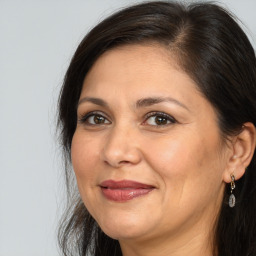This sample will let you know about :-
- What is Paediatric Nursing Operational Plans?
- What is Relevant stakeholders?
- Discuss Monitoring procedures.
INTRODUCTION
Operational plans in the health and social care generally pertain to the issues that are related to operational efficiency of the firm i.e. the staffing related issues or the quality related aspects etc. The current report will highlight the different operational objectives of a registered nurse in the health and social care for children and young people and this will be then evaluated with the perception of the organizational objectives. Further, the report will identify the different risks that are associated with the operational plan and the impact of relevant stakeholders. Then the report will develop an operational plan and the monitoring and evaluation procedures will also be detailed in the report further.
Operational objectives
The major area of responsibilities that I am required to comply with are the duties related to the nursing of the children and young people that we admit in our hospital and ensure that each patient has an adequate care plan that has been developed for them. I ensure that the past medical history of the child is complete and the doctor who is attending them have the entire knowledge of the patients medical history. Further, I ensure that the meals that are being served to the children are in accordance with the medical standards, and they have an option to eat something else if they want, given that it is healthy (Walsh, Kittler and Mahal, 2018). My responsibilities also include to make children understand why they are being taught to brush their teeth twice a day or why are they being given certain kind of meals rather than forcing them to do so.
Apart from the patient centred care duties, I also oversee that the hygiene of the hospital is maintained at all times i.e. it is not compromised with. The patients i.e. children and young people often roam on the premises without any protection and it becomes my duty to ensure that they live in a safe and healthy environment. I also have to ensure that there is a proper opportunity that are available to children for expanding their knowledge while they are in the facility. I have developed a schedule for them where they are taught different things, and they have playing sessions where the importance of physical activity is explained to them.Get Assignment Examples ? Talk to our Experts!
Every child and younger person admitted in the facility is evaluated consistently on the basis of an assessment plan where their performance, their behaviour, their medical progress etc. are evaluated regularly. There are a number of nurses that are working under me and I ensure that all of them work in a coordinated manner where they understand the different duties they are required to perform, and they recognize the importance of such duties or roles that they have been assigned (Francetic and et.al., 2019). All the points detailed above consists of the operational objectives that I am required to perform within my own area of responsibility i.e. as a registered nurse in the facility.
Objectives of area of responsibility in relation to objectives of the organization
In order to give a proper care environment to the children and younger people, it is necessary to ensure that the nurses and care takers that are bing hired in the facility are adequately trained and recognize the different duties that they are required to perform. As a head registered nurse, I have to hire skilled and experienced nurses and reviewing their qualifications so that I can ensure the employment of a good quality staff is my responsibility corresponding with that of the organizational objective of quality management. I have to work very closely with the coordinator in developing the individual care plan and assessment plan for the children and to ensure that quality of care is not compromised with.
There are 3 major organizational objectives i.e. to offer good and quality treatment to the patients, ensure availability of skilled staff who can treat them adequately and maintaining updated policies and practices in the healthcare facility (Matthias and Brown, 2016). As a registered nurse, apart from the implementation of updated policies in the facility, both of the remaining objectives are synchronized with my objectives. I regularly overview the different care plan and strategies that are being implemented in the facility, the hygienic state of the facility and the different treatment and care plans that are developed for the children. Want to get Assignment help? Talk Our Expert Now!
I give emphasis on the development of individual plans so that care can be given to the children in an exhaustive manner. Another major objective that is covered under my responsibility is that I have to monitor the performance of the nurses and caretakers working under me. I regularly check the knowledge and relevant skills of the caretakers that I have hired so that I can check whether they are able to provide quality care or not to the patients and I rate their performance. Lastly, I ensure that for meeting the care requirement of the patients I have adequate staff in the facility i.e. there are adequate number of nurses and caretakers in the facility so that the requirements of the children can be addressed at all times (Henderson and Seden, 2017).
In this manner, my objectives are inherently aligned with the objectives of the entire healthcare facility and therefore there are collective efforts to achieve the stated objectives.
Associated risks and contingency arrangements
In every organization, business or unit, there are certain risks that are inherent with the operations of the business. It is necessary to identify and mitigate the potential risks and develop the contingency plans accordingly. As a registered nurse, there are various risk factors that have to be considered in order to avoid any prudent losses and act accordingly:
- Irregular Forecasting: It is necessary to regularly monitor the health security levels and trends that are ongoing currently. For instance acknowledging the threat of Corona Virus that is spreading like a plague is a potential health related threat to the children and young person. It is important to develop the practices that will help in minimizing the trends that are prevalent in the current market (Murphy, Wankhade and Lakoma, 2019). Developing proactive measures rather than reactive will help in mitigating the potential risks that could have otherwise affected severely.
- Faulty decision-making: While working in a healthcare facilities, every decision needs to be done in a prudent and careful manner because the lives are at stake. The hiring of the nurses and caretakers need to be done after the detailed evaluation, the past medial history of the patient must be recorded in detail and the documents should be maintained properly so that the care plan that is developed does not prove to be negatively affecting.
- Natural or Artificial Calamities: There can be any sort of natural calamity such as floods, draughts, earthquakes etc. and in order to develop appropriate measures, it is necessary to make he staff and the patients familiar with the safety drills that are undertaken (Henderson and Seden, 2017). Since majority of the patients are children, the staff needs to be prepared in a better way to deal with such contingencies. Artificial problems are man made i.e. leaks in the sanitation pipes etc., can also expose the hygiene of the facility at a risk thus making the requirement of a proper contingency plan necessary.
- Lack of any backup plan: Risks of all kinds and type can arise in an organization and therefore it is necessary to develop a back up plan that can be implemented in the organization so that implementation of appropriate strategies and planning can assist in minimizing potential losses that might be incurred.
Relevant stakeholders
Stakeholders are those parties that are interested in the activities that are being undertaken in the business or in the organization and these stakeholders can at times offer support in the development of the organization whenever it is required. For the healthcare services, the major stakeholders are:
- Committee Members: These are the managers of the healthcare facilities and the majority of decision-making activities are undertaken by these members (Walsh and et.al., 2019). Providing additional funds, approving budgets, fund-raising, expenditures or investments to be made, etc. all are approved by these committee members. This category of stakeholders can help in implementing some critical measures for the benefit of the healthcare facility.
- Parents/ Family Members of the patients: This is another important category of stakeholders who play a important role in devising the care plan or the treatment that their child must receive. Since the majority of the patients are either young or are simply child, the approval of parents is a critical thing that makes their approval an important part of decision-making. The workers of the facility need to have a peaceful relationship with the parents where there trust in the treatments being offered is very important.
- Staff: Staff is also a major participant in coordinating and integrating the efforts collectively, and they need to understand how the different care polices need to be applied and the manner in which treatment and assessment of the patients needs to be done (Shepherd, 2020). Their consent regarding the methods being adopted and the understanding of such methods is critical in understanding that how care needs to be provided to the children in the facility.
- CQC, Inspectors etc.: These are the most crucial stakeholders who evaluate how the care takers are working, the treatment methods being adopted in the facility, the hygiene that is being maintained and ensure that they meet the standards regarding healthcare facilities that have been developed by such regulatory bodies in the healthcare sector in UK.
Therefore, all these stakeholders are major parties who affect and influence the decisions that are being made on the way children or young persons are being treated and also the manner in which the healthcare facility operates.Ask for Nursing assignment help from our experts!
Implementing operational plan
The operational plan consists of the description of the changes that are to be made along with the manner in which these changes are to be made and the follow-up actions that have been devised. As a head registered nurse in the facility, currently, the facility is facing the requirement of more skilled staff that can manage the children in a better way and the care being given is more prominent (Verrecchia and et.al., 2019). For this, the operational plan that can be implemented is:
- Current situation: Currently, the healthcare facility lacks adequately trained staff that can identify the problem that child is facing as quickly as possible and then develop a care plan effectively. The requires recruitment of some more trained nurses and caretakers as well as developing training schedules for the existing nurses so that care plan for the children can be developed as quickly as possible.
- Desired Situation: The facility want to make their staff multiskilled where they can address the multiple problems of their patients and know the correct and most appropriate patient care plan based on the individual requirements that is to be implemented (Thani and et.al., 2019). This will help in improving the quality and frequency of the care plan being developed thus solving the requirements of the patient in a enhanced way of serving them.
- Methods to be adopted: In order to enhance the skills of existing staff, training schedules along with working schedules can be prepared. This will help them in learning new methods of giving care to patients. In order to recruit new staff, a recruitment procedure involving test of practical knowledge can be adopted where the quickness and correctness of the candidate's in analysing a situation will help them in selecting a better staff.
- Performance Measurement tactic: The performance of their employees can be measured daily, weekly or quarterly where their heads can report their capability of judging the patient and taking critical decisions (World Health Organization, 2018). This can be assisted by setting p certain standard criteria that the staff is required to achieve in order to enhance the overall performance.
Collectively apart from the steps above, in order to implement a operational plan, the objectives must be ascertained very clearly, the budget should be developed exhaustively and the communication of such operational plan should be done properly.
Know more - Sources of Identifying Entrepreneurial Opportunities
Monitoring procedures
It is very important to regularly monitor the progress that is going on and ensuring that the steps that are being adopted are in the correct context (Tsofa, Molyneux and Goodman, 2016). The monitoring can be done in a variety of methods:
- Ensuring that the operational plan that has been developed in being implemented in the correct manner i.e. while the plan is being implemented, the sole cause of implementing that [plans does not get lost. For instance, while hiring the managers should keep in mind that there goal is to hire multiskilled personnel rather than just hiring on qualification basis.
- It can be ensured that the employees understand the purpose behind developing such policies so that they can integrate their efforts towards the changes that are being made (Struminger and et.al., 2017). When the training sessions are being developed for new employees, it is necessary to make them understand why they are required to undergo some specific changes i.e. they will be able to improve their care taking skills which will ultimately benefit them only.
- Taking regular feedbacks and conducting surveys is another aspect that can be taken in to consideration so that management can collect the opinions of the caretakers or the patients and changes if any can be made accordingly.
Evaluating operational plans and implementing necessary actions
Evaluation can be integrated with the monitoring aspect so that collectively it assists in ensuring correct implementation of the operational plan and then evaluating the progress being undertaken. Benchmarking technique under which the standard performance is compared with the actual performance and the causes of deviation are being evaluated, the key performance indicator technique under which the key indicators of performance are developed can be counted as the performance evaluation techniques (Al Shobaki, Amuna and Naser, 2017). However, there are certain actions that can be recommended in order to enhance the process:
- The proper records related to the evaluation can be maintained where the performance of the employees and the impact of such improved performance on the outcomes is also evaluated by the management.
- Quality assurance is another point that can be evaluated where the management must ensure that increased training must also be in compliance with the quality norms or standards that have been developed.
- Setting up targets where the achievement of such targets and the manner in which they have been achieved is evaluated and appropriate conclusions are drawn.
CONCLUSION
The perspective of the registered nurse was taken into evaluation in the report and their duties were taken into consideration while developing an operational plan. The report evaluated the different risks that are associated with the operational plan and the implementation, monitoring and evaluation of the plan such developed was done. The current report identified the problem inadequately skilled staff and the operational plan discussed different aspects that were associated with the plan were identified and evaluated in the report.
Read More - Managing a Successful Business Diversity












